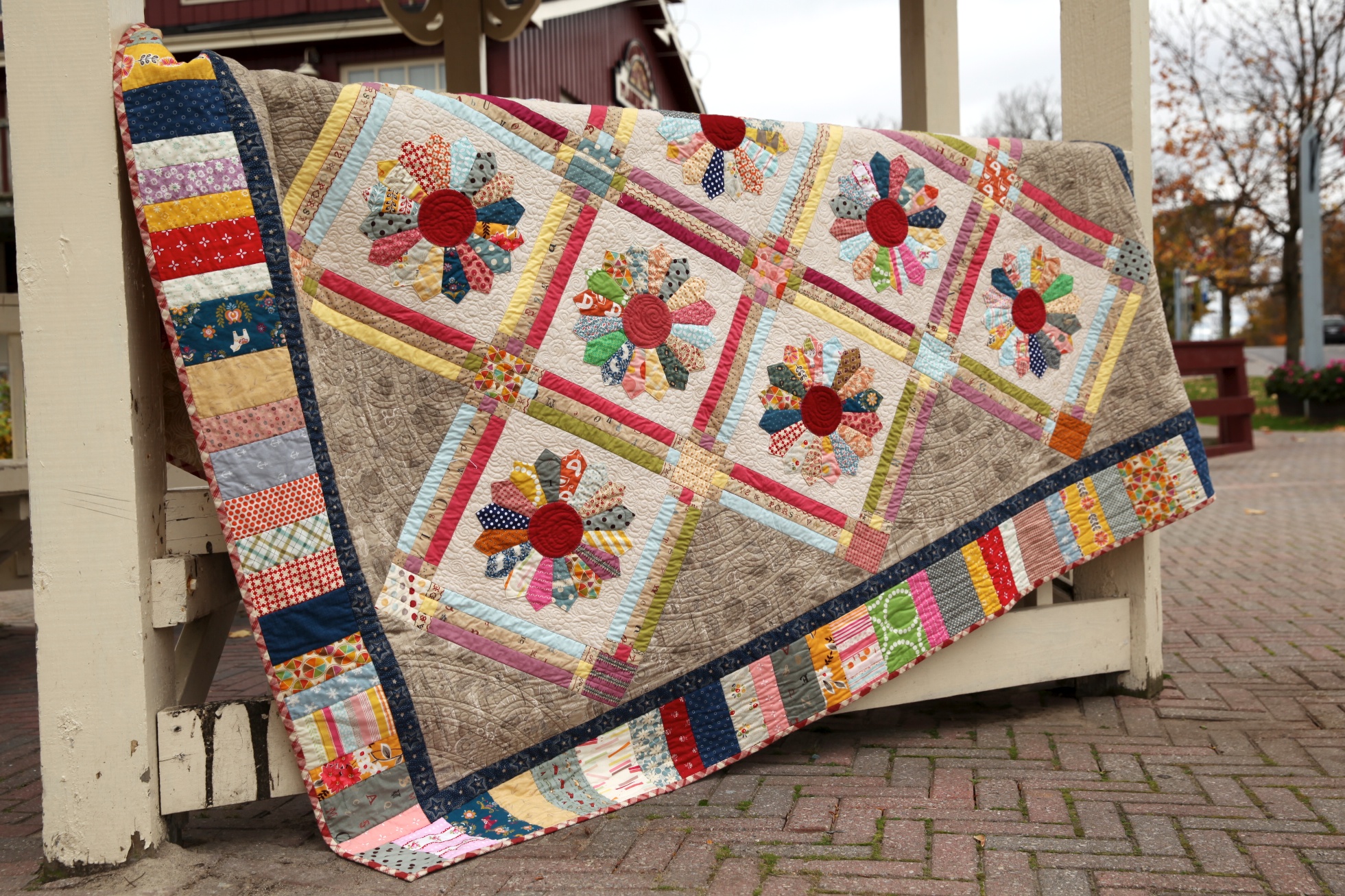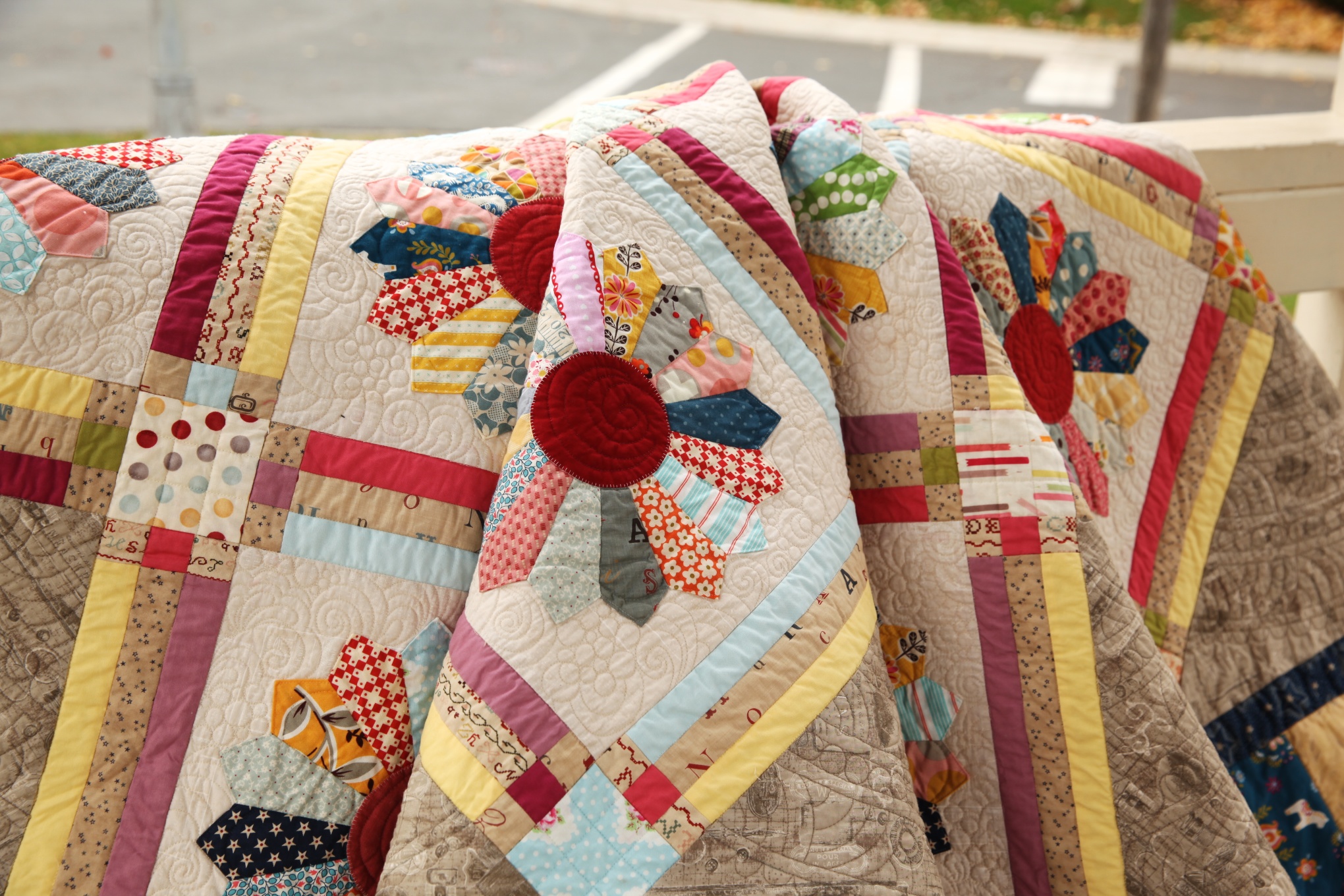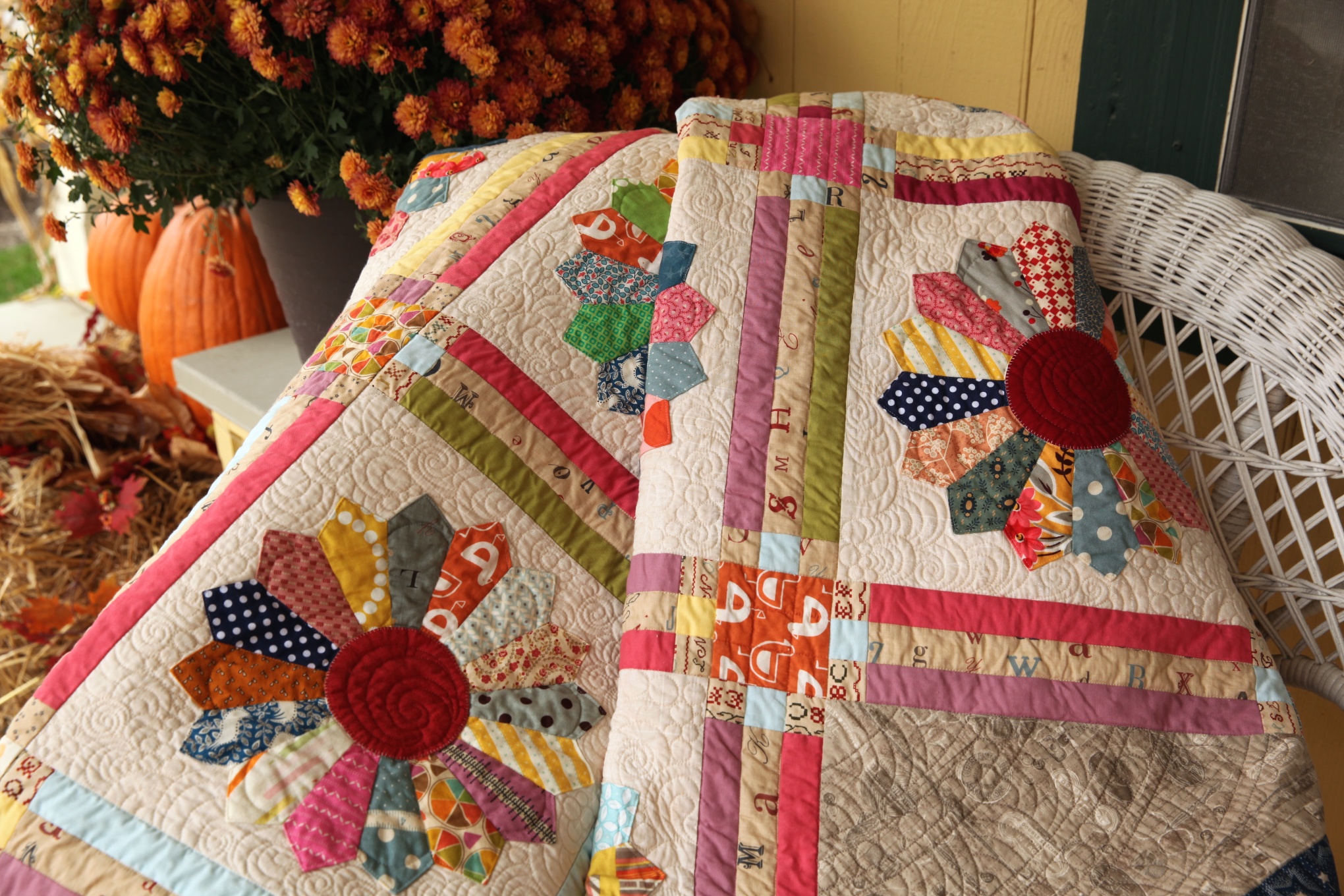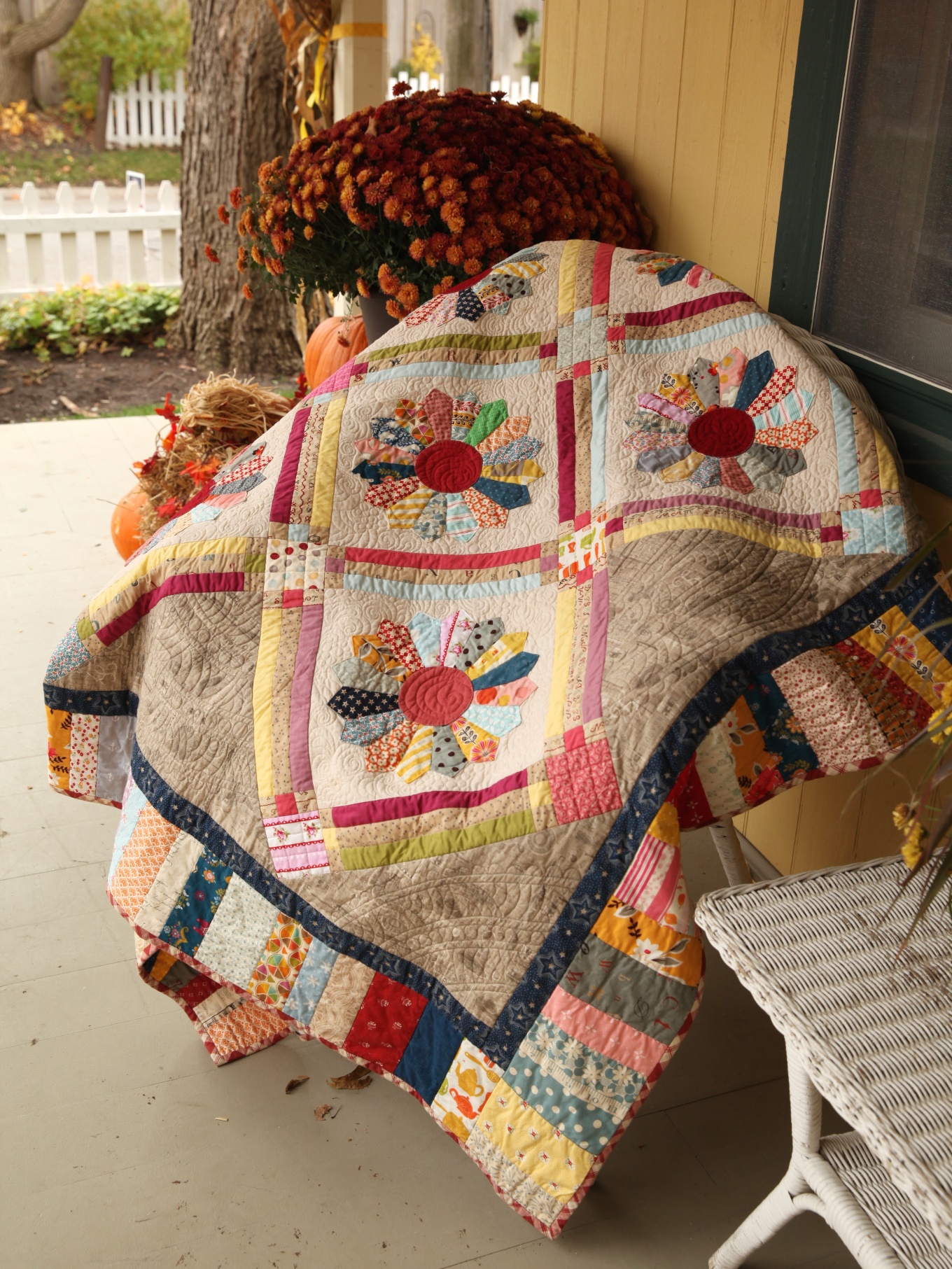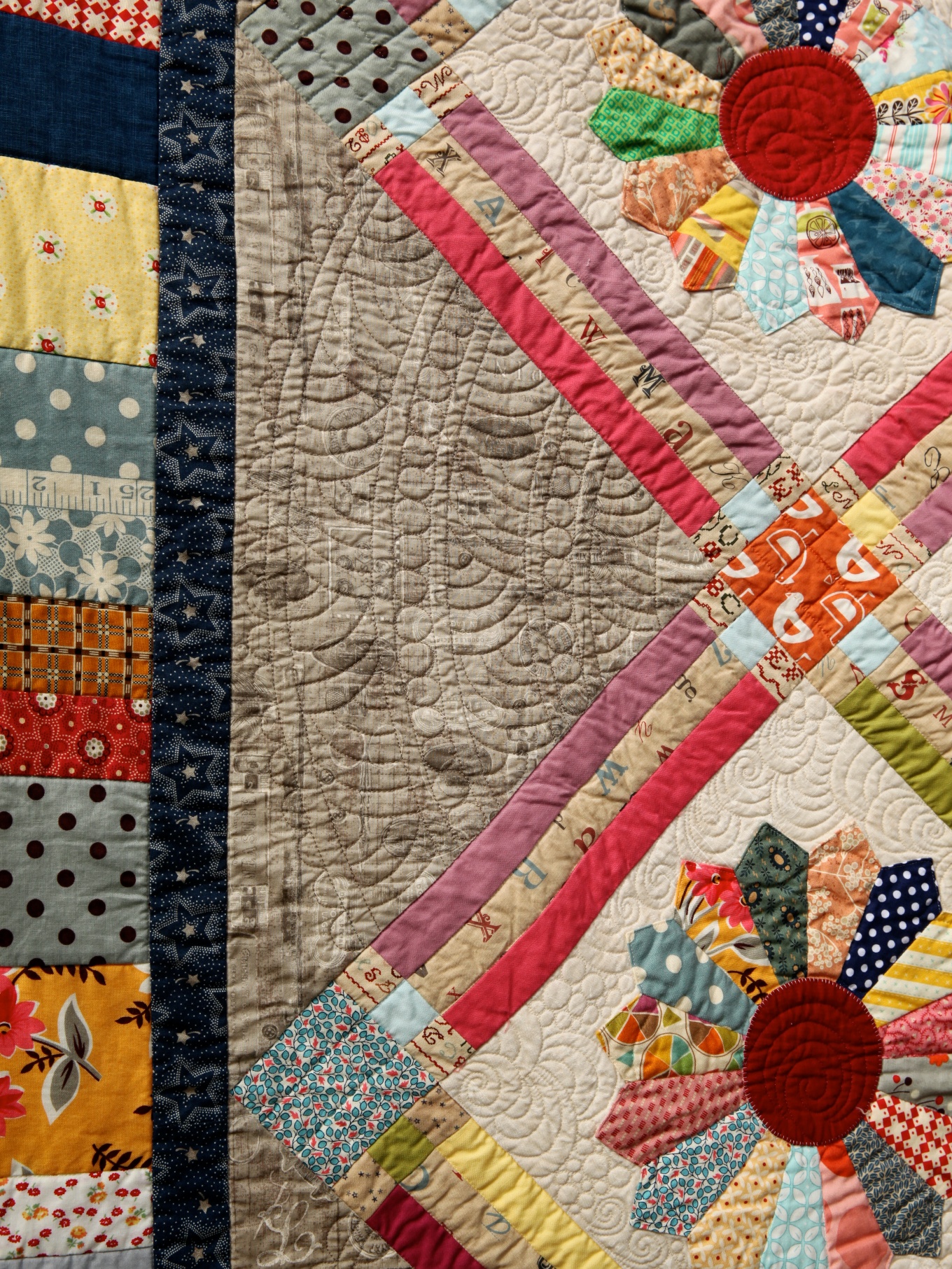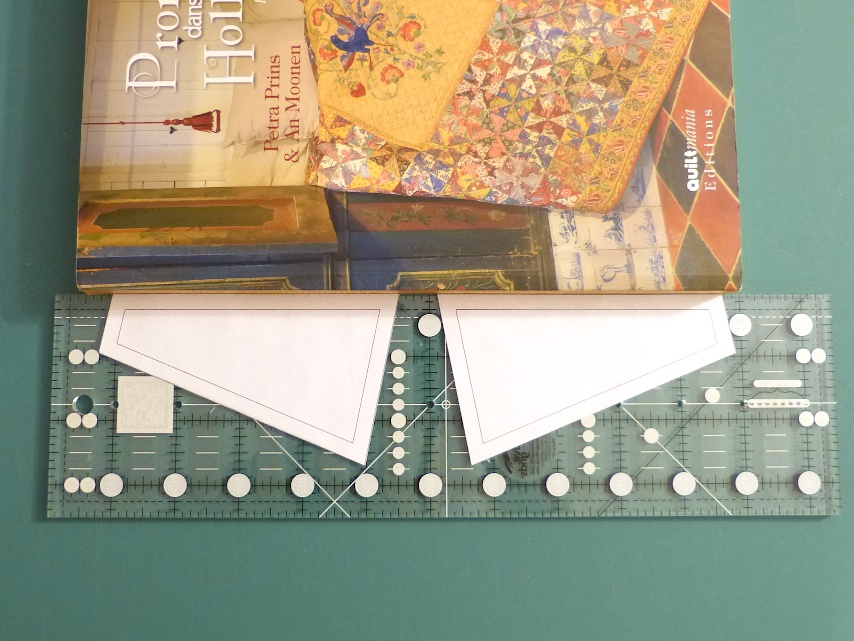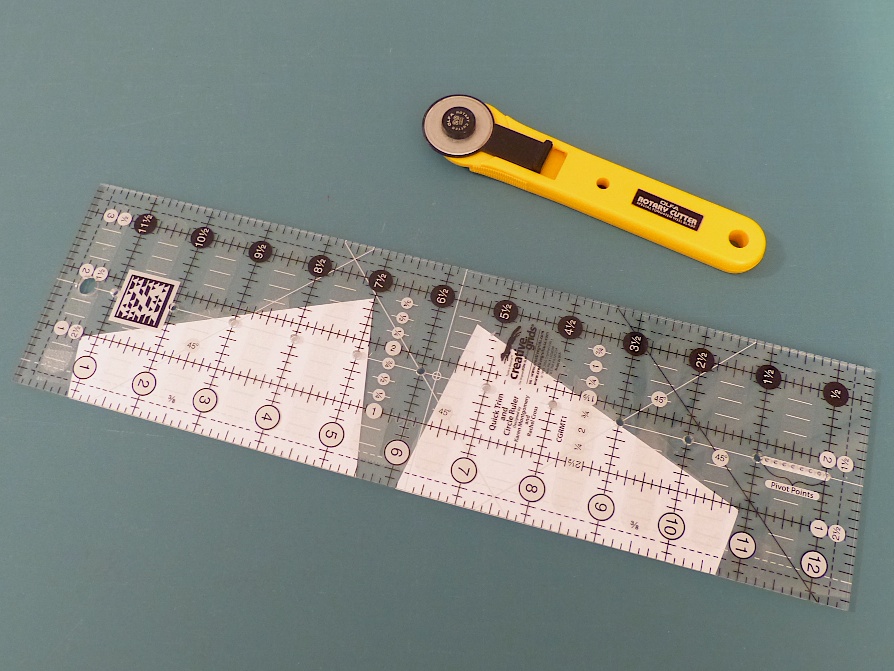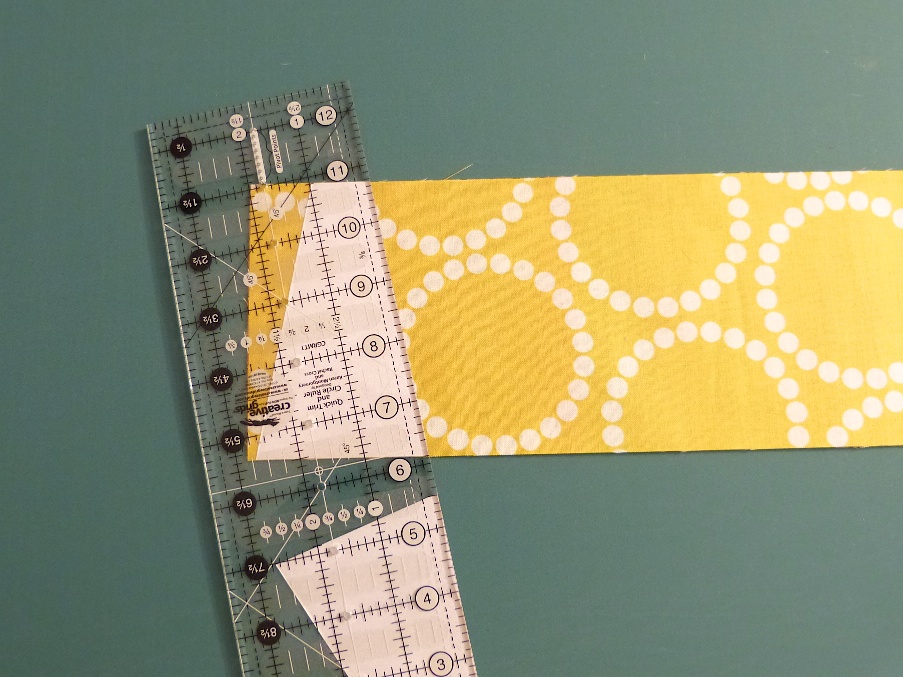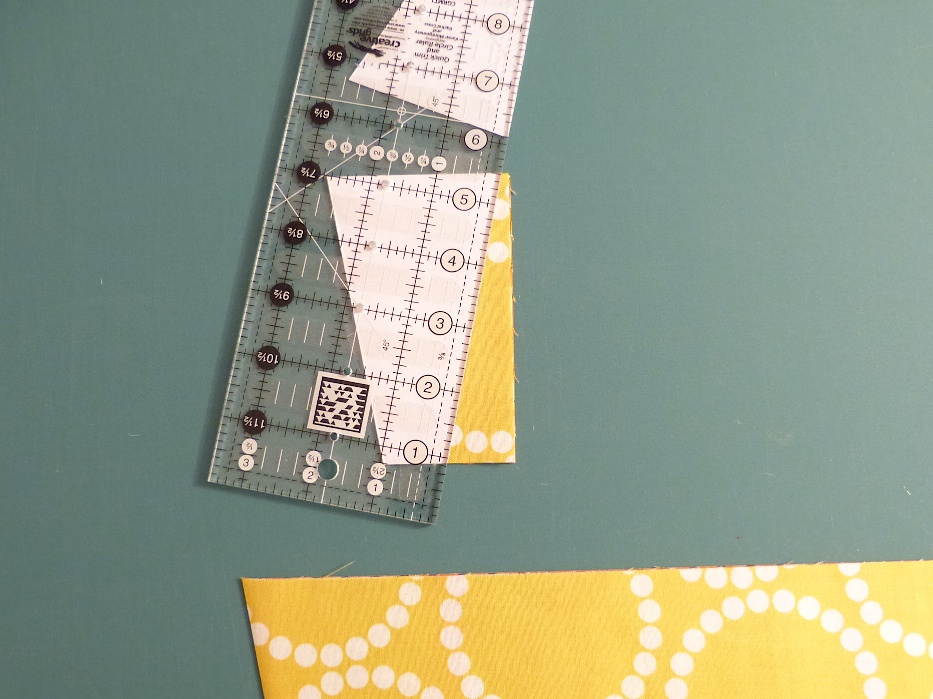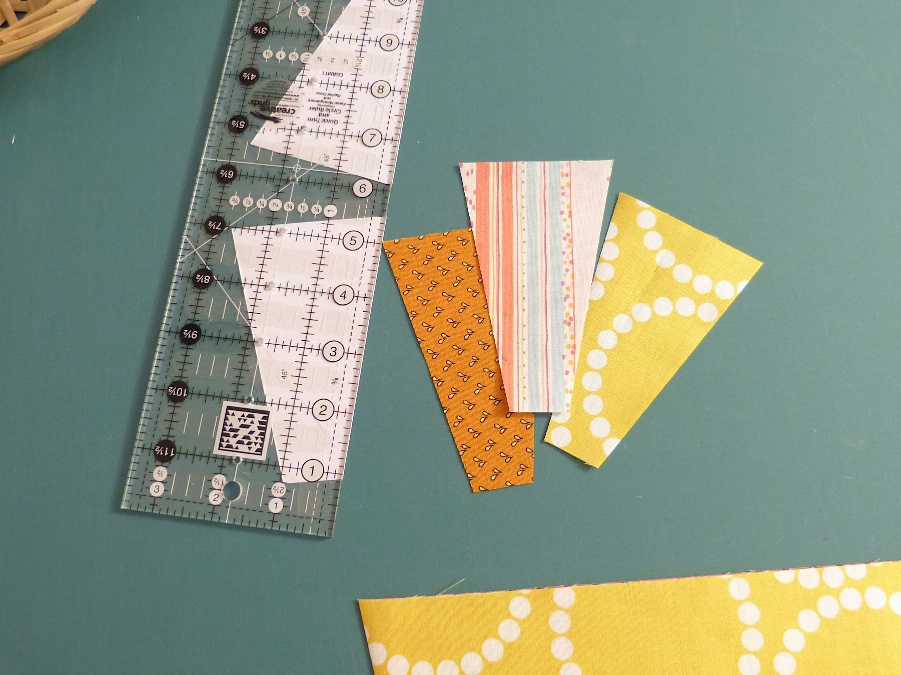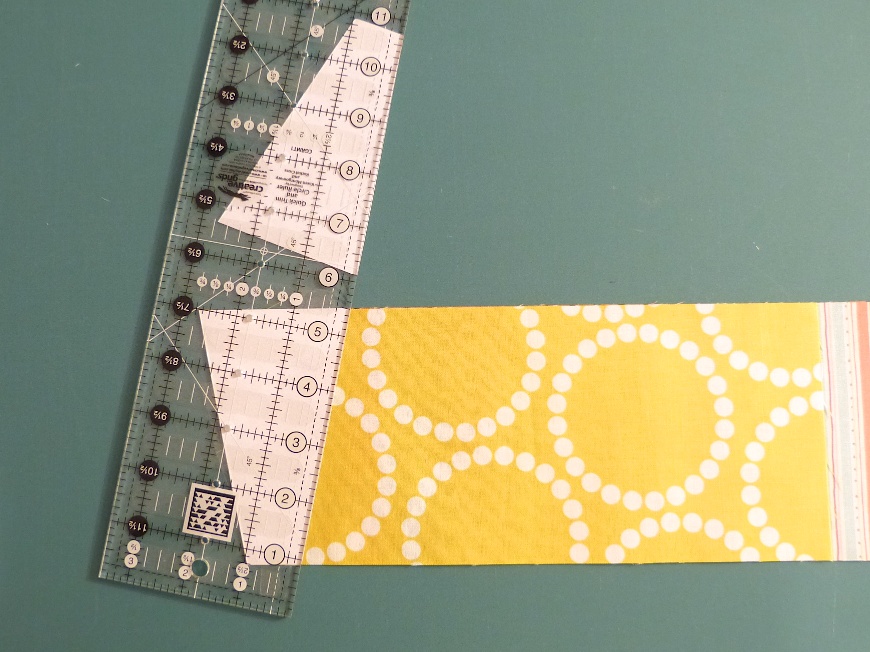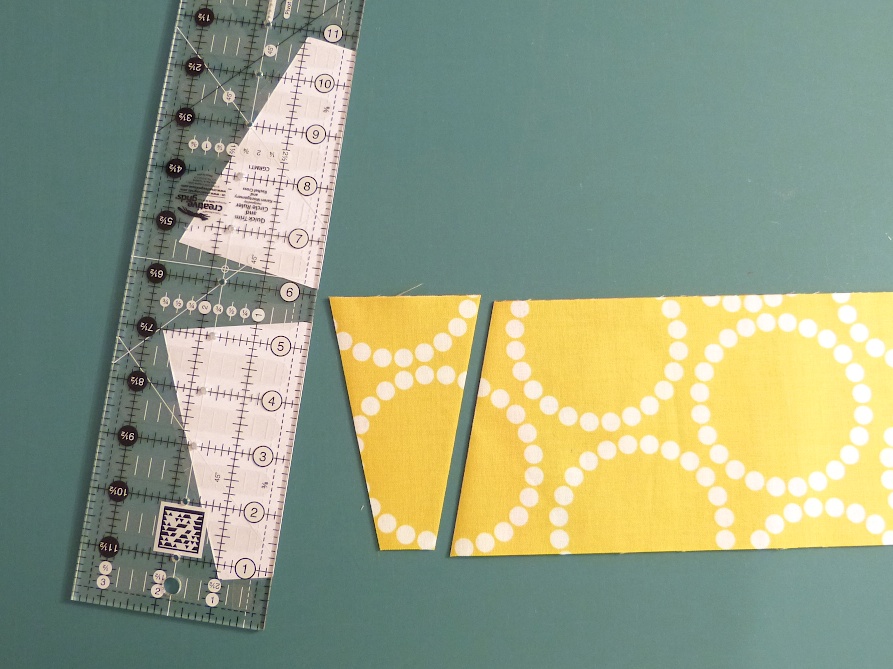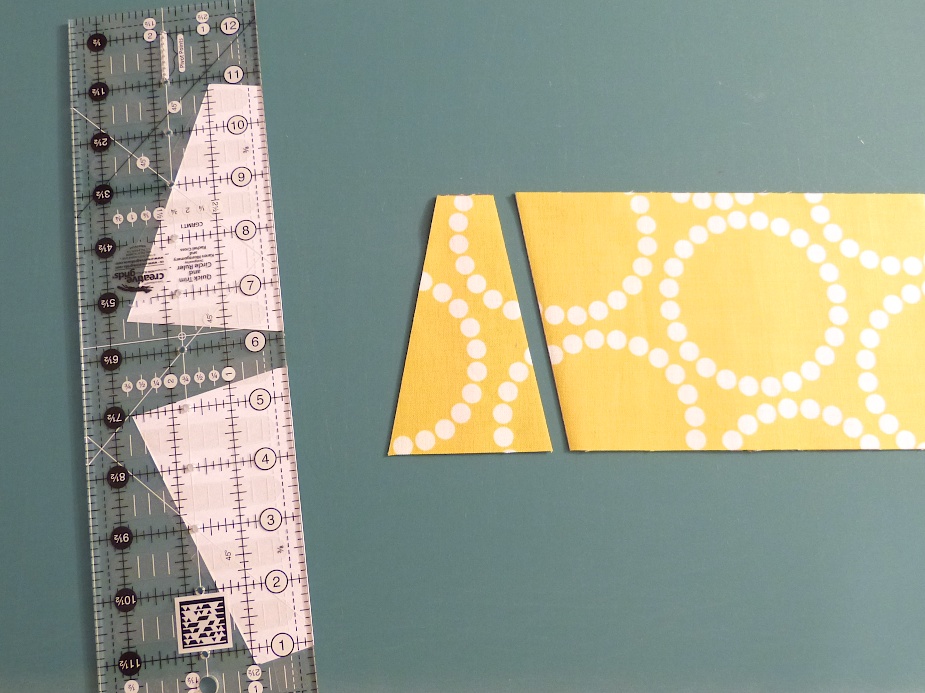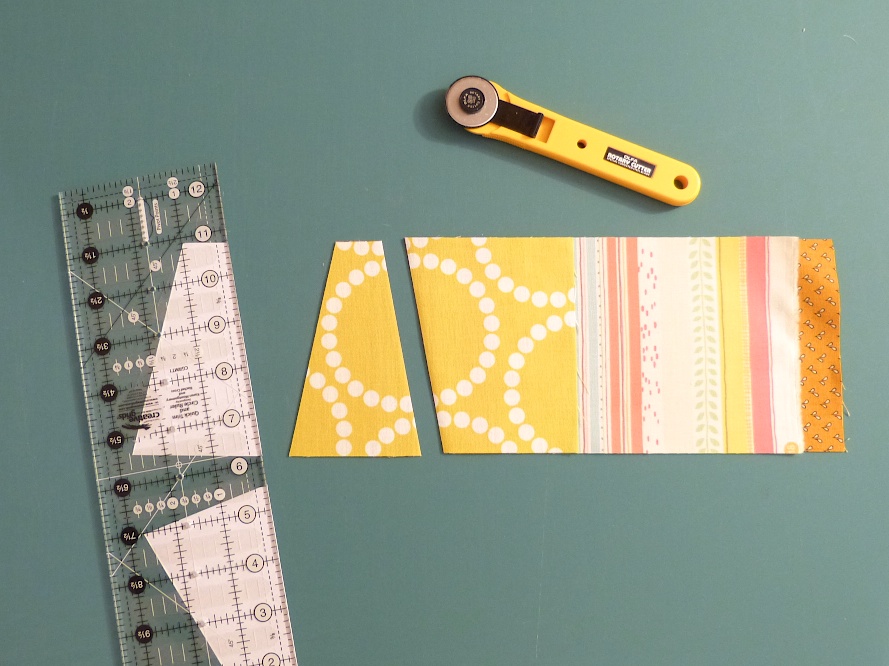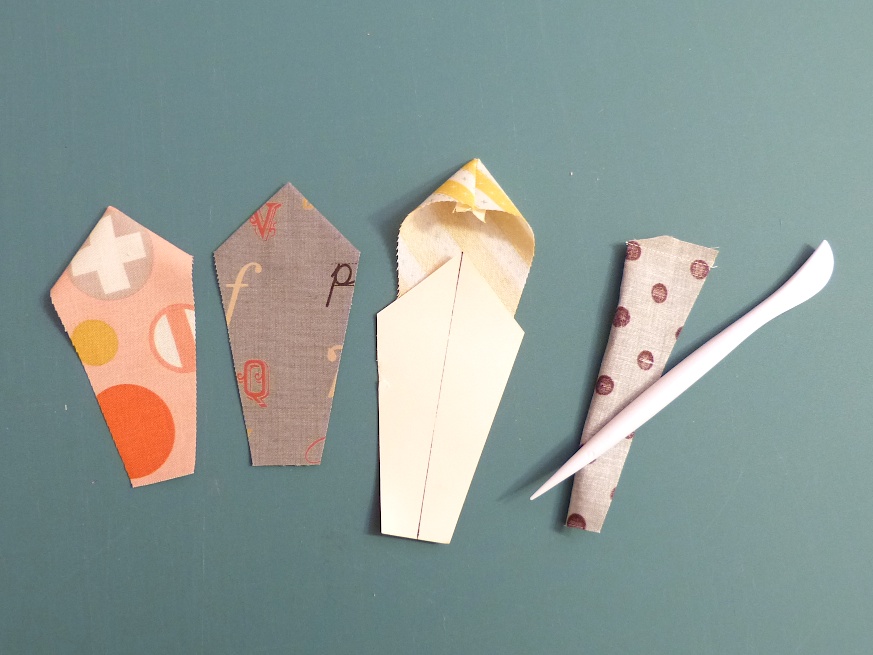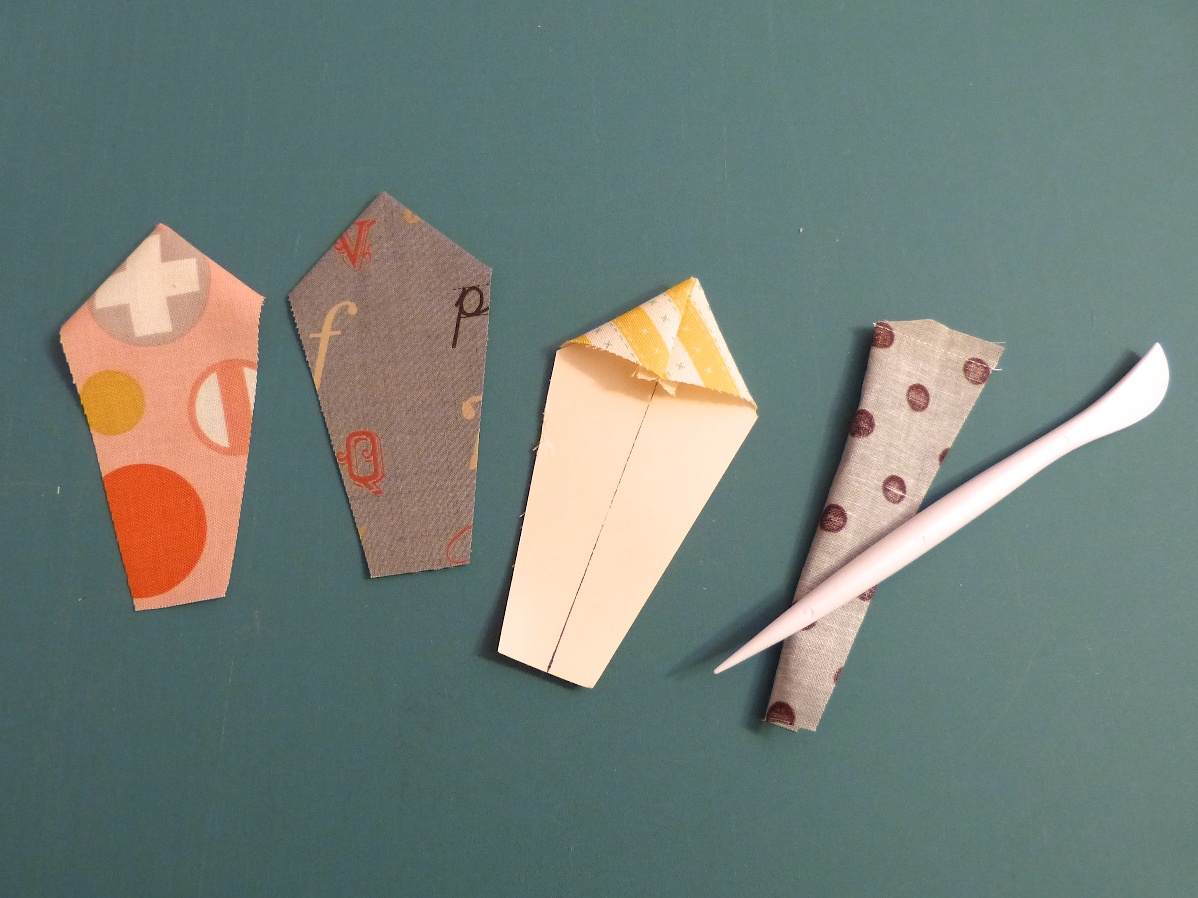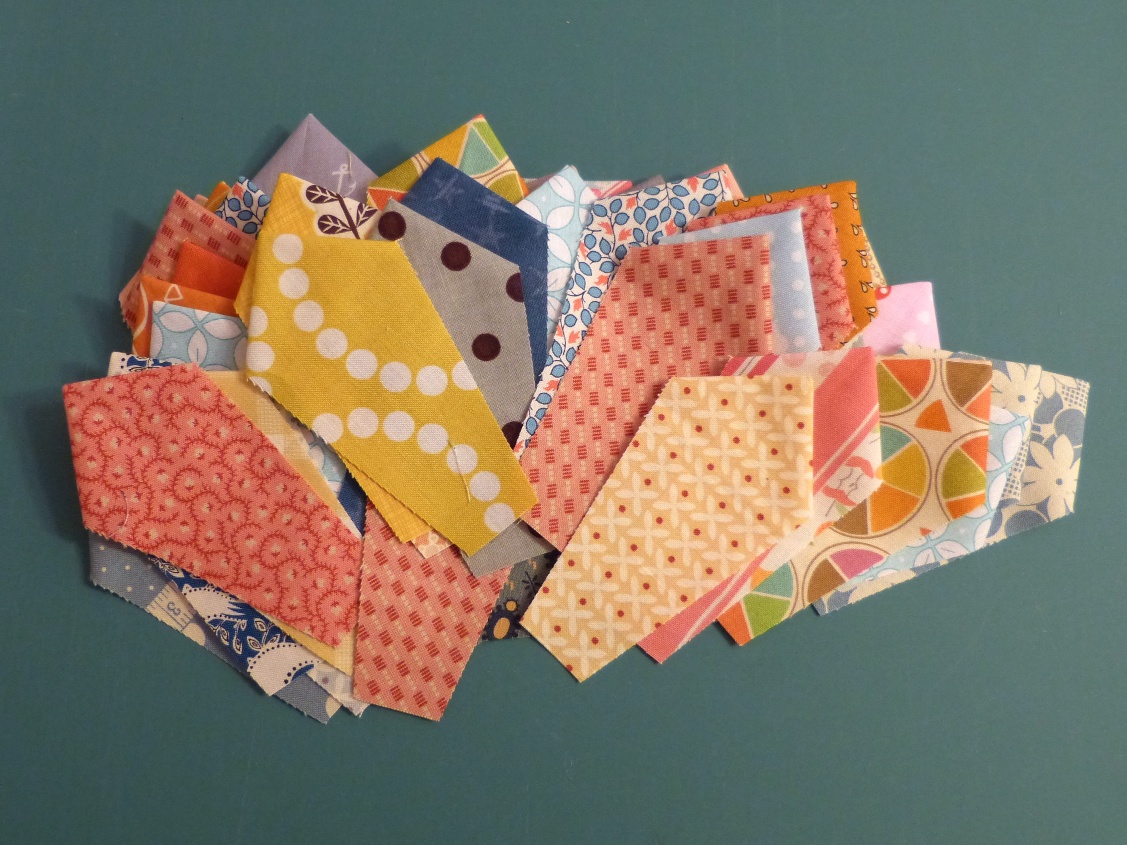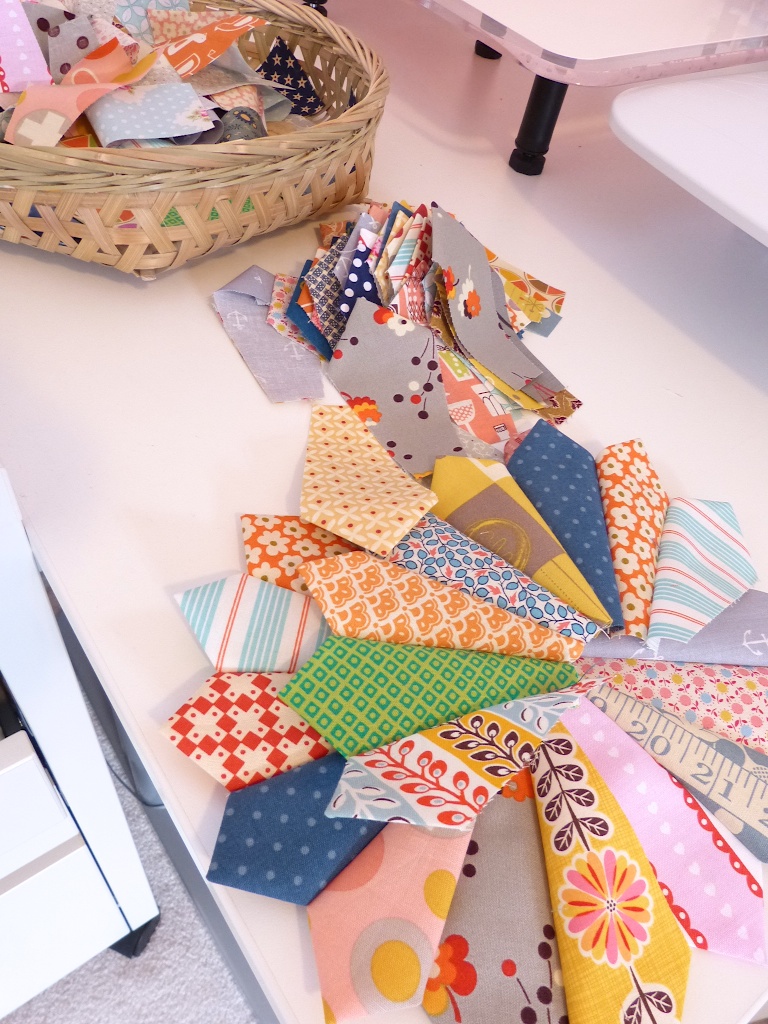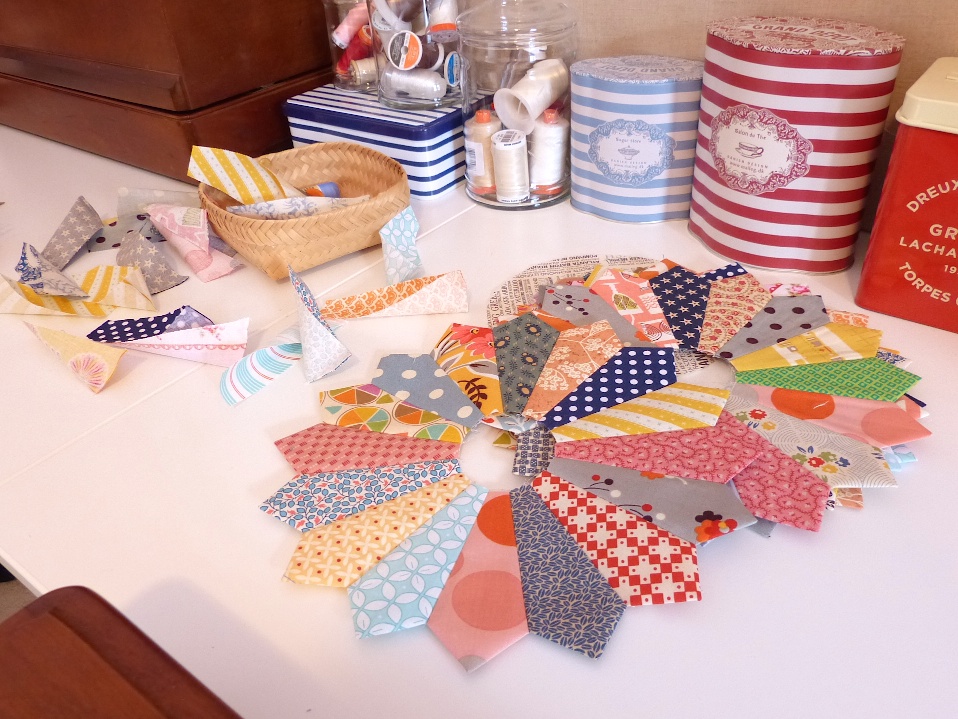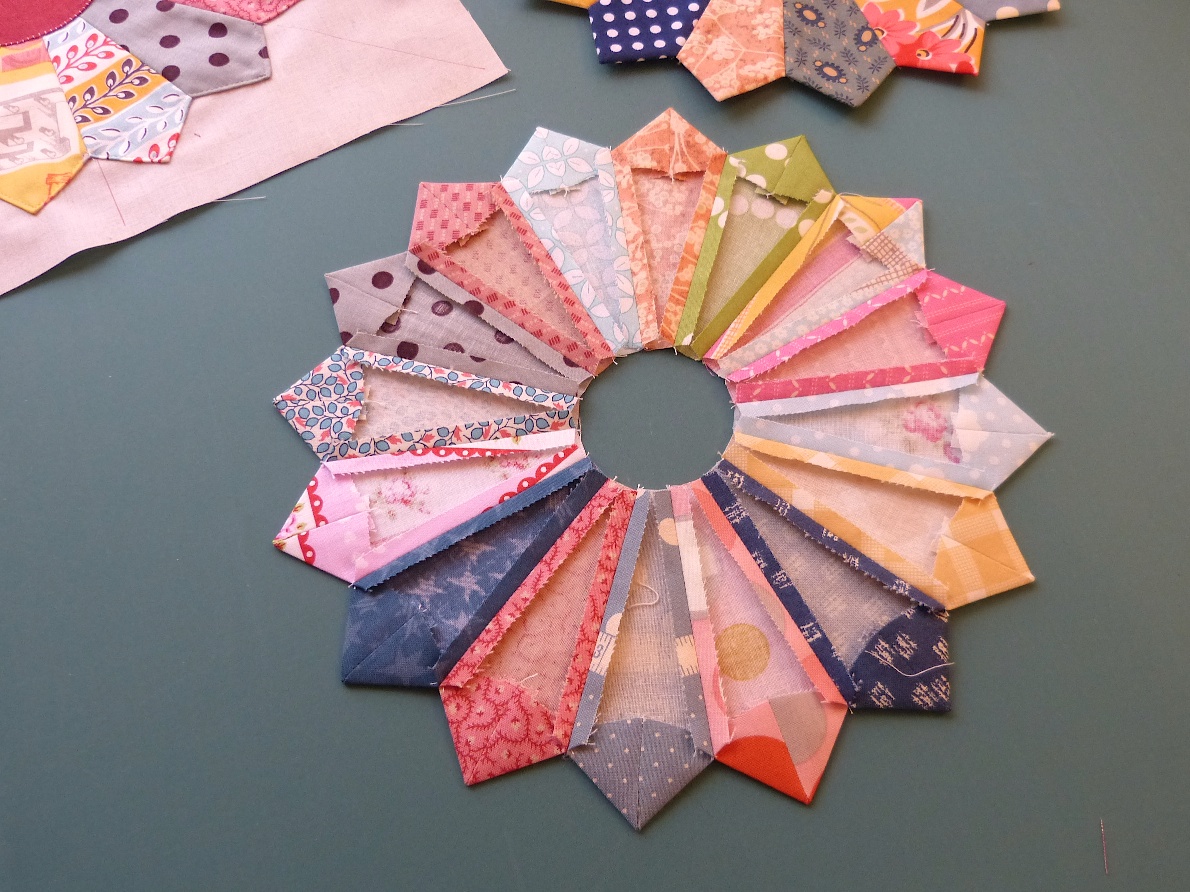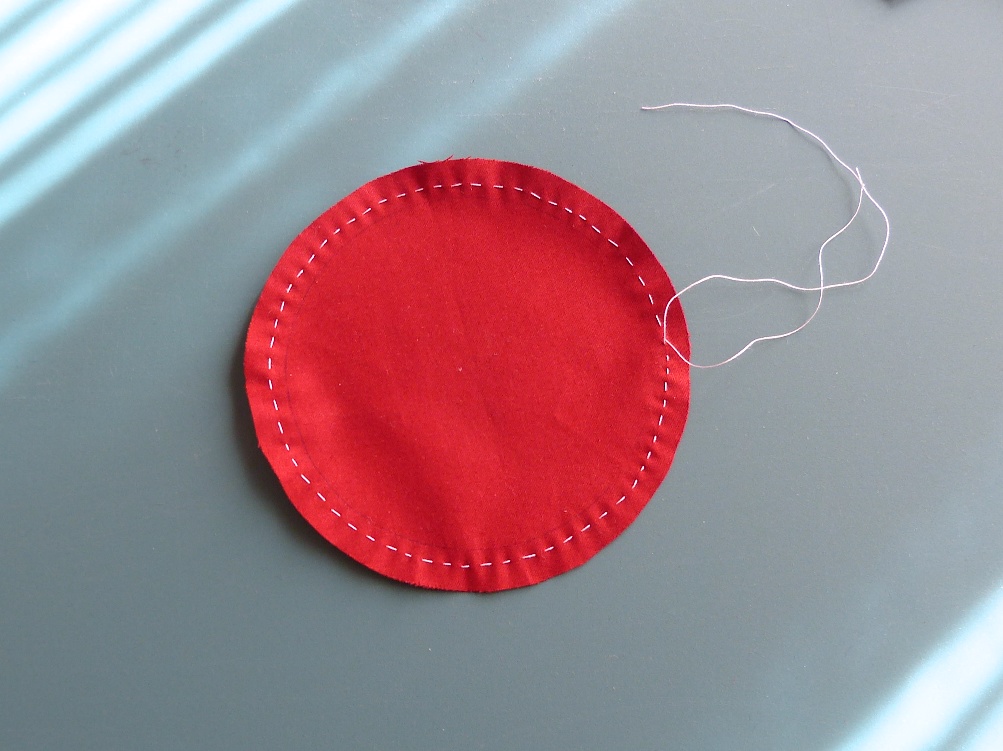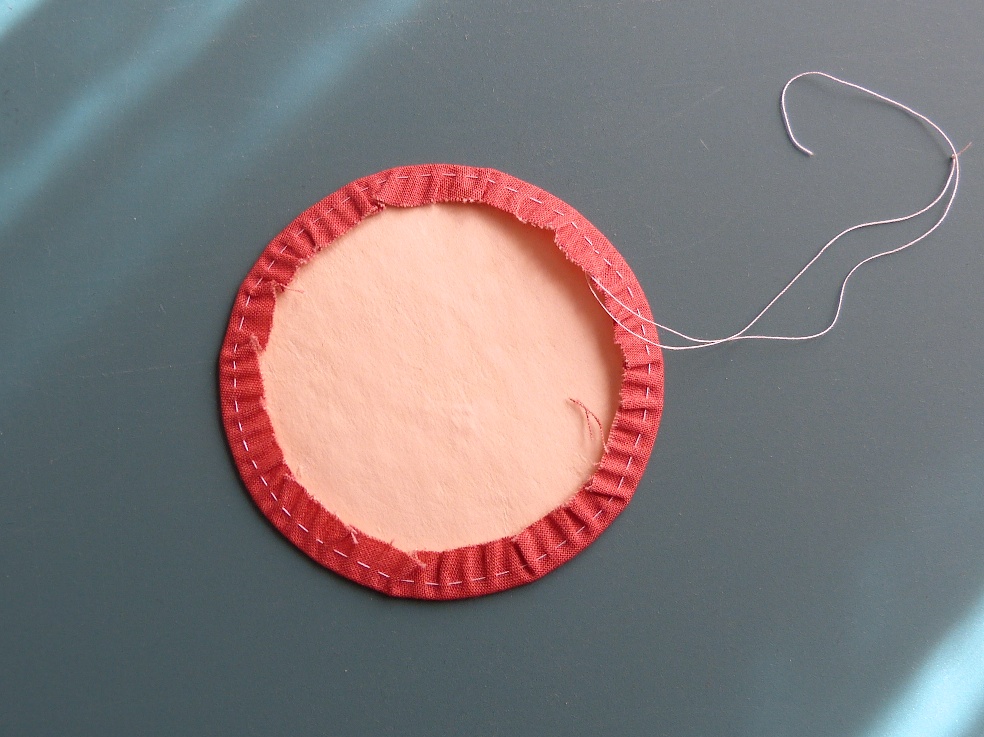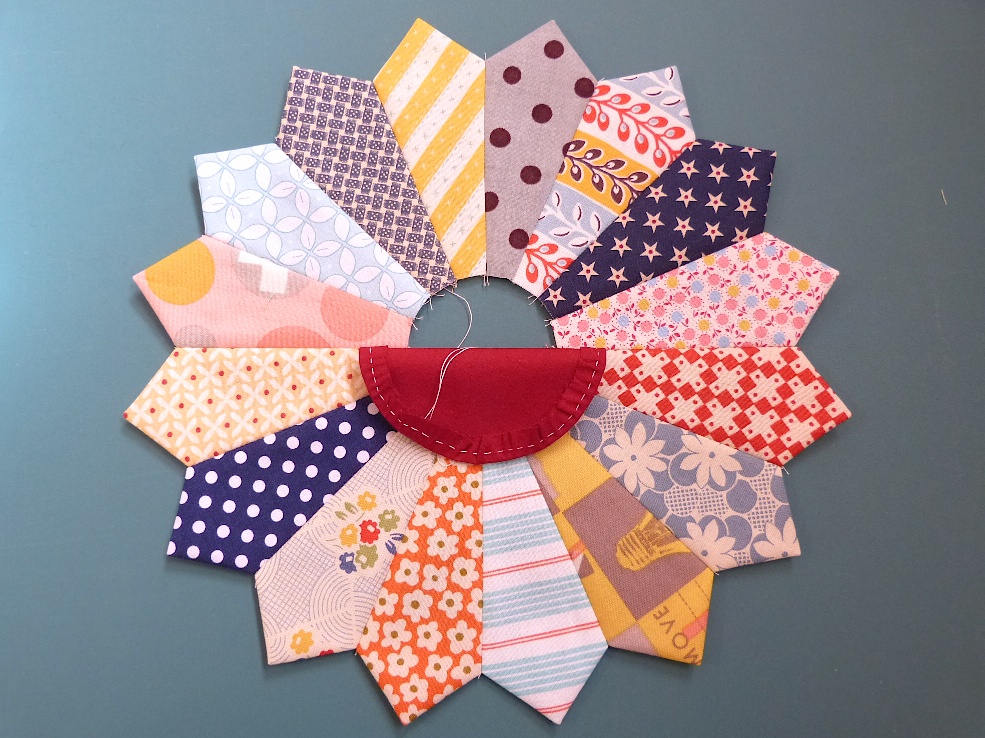I feel so good to have a number of projects done last month. Here is the biggest one: my Playful Dresden Plates quilt.
I really like my swirly FMQ on the background fabric.
Too bad, I haven't had the chance to take some good photos, with a good camera. It really looks better than what it's shown here.
I did many new tries on this quilt: cutting with paper templates taped on a rotary cutting ruler, strip-pieced sashing, machine finished Dresden Plate blocks, quilting pebbles/bobbles as well as binding cut on bias.
2015 Update:
The has been my husband's favourite bed quilt! After several washes it still looks like new. I love it, too.
Here are the "better" photos I took in October, 2014:

